Remember last year when flash tattoos were a thing and all the hippie festival bloggers were wearing gold and silver temporary tattoos? Researchers at the MIT Media Lab in collaboration with Microsoft Research took these tattoos to the next level by making them interactive.
MIT Media Lab and Microsoft Research have developed DuoSkin, a new customizable wearable device that you wear on your skin like a flash tattoo. Made out of gold leaf, an affordable and skin-safe material, DuoSkin can create on-skin interfaces with three capabilities: touch input processing, output display, and wireless communication. Though the researchers use the term “on-skin interface,” I prefer to call this a Wearable User Interface, or WUI (pronounced “wooey” – it’s just more fun).
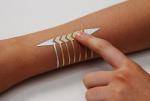


Touch Input
To retrieve input, Duoskin’s input elements can isolate directional traces. The 2D trackpad structure shown here is made of two separately-fabricated layers which each track finger traces on different axes. These layers are created and applied separately onto the skin.
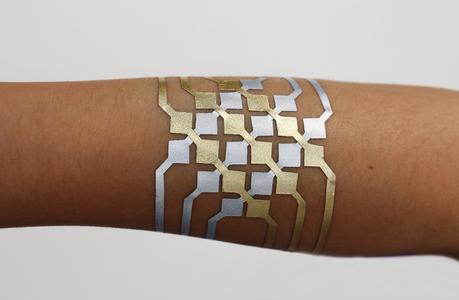
Output Display
DuoSkin uses thermochromic pigments – material that changes color with temperature changes – to create soft displays for their WUI. To accomplish this, resistive heating elements are placed between the skin and the thermochromic layer.
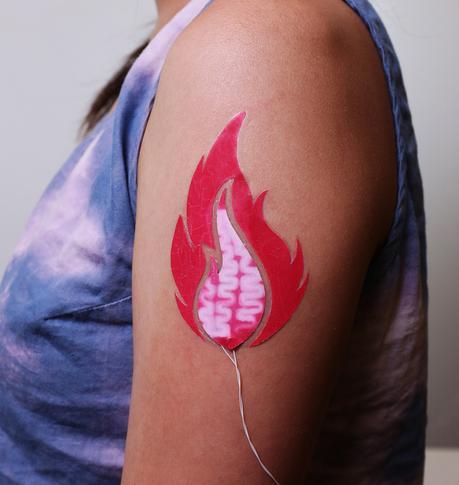
DuoSkin has also been used with small LEDs to create on-skin digital jewelry, like the chandelier-like “necklace” seen below:
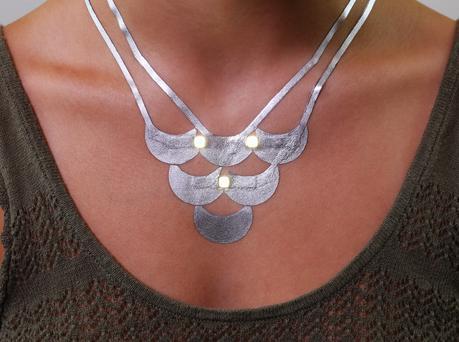
Wireless Communication
Since the WUI is placed on the body, its communication needs to be wireless. DuoSkin uses near-field communication (NFC) tags, which are composed of a communication chip connected to a coil. NFC is a short-range wireless communication technology, which requires two communicating NFC tags to be very close, almost touching. With NFC you can read and write data and, in more complex cases, even perform authentication. Imagine using a DuoSkin tattoo to pay for your coffee, or to authenticate your access into your office building! These are the types of uses we can expect from WUIs as they become more advanced.
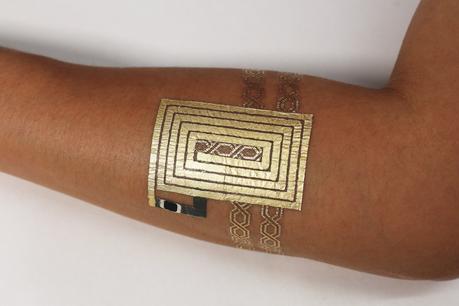
Though still in an early phase, DuoSkin presents a big opportunity for the future of computing. It could hail the start of a new wave of ubiquitous computing, where our interactions with the digital world are no longer confined to screens but are defined by temporary body augmentations.
How it’s made:

. . . . . . .
Media from MIT Media Lab
Disclaimer: this post was not sponsored, nor was it informed or influenced by my role at Microsoft or any insider information. All information presented here can be found on the MIT Media Lab’s website.
. . . . . . .





